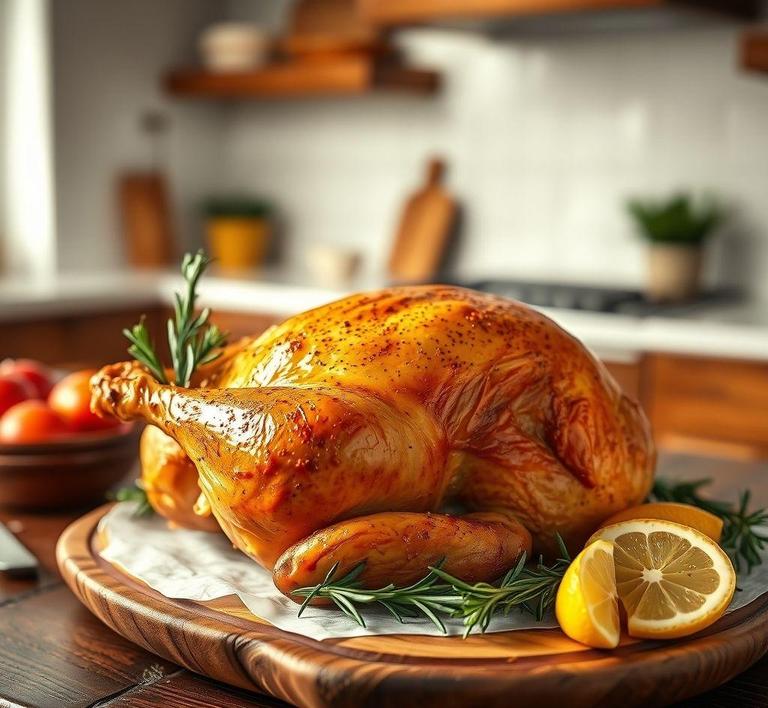If you’ve ever found yourself with leftover chicken and wondered whether it’s safe to refreeze it, you’re not alone. Refreezing chicken is a topic that sparks some confusion, but with a few simple guidelines, you can make sure you’re handling your poultry safely and minimizing the risk of foodborne illness. Whether you’ve thawed chicken and now need to store it again or have extra cooked chicken that you’re not ready to eat, this guide will walk you through the do’s and don’ts of refreezing chicken to keep it safe, fresh, and tasty for later use.
Can You Refreeze Chicken?

The question of whether you can refreeze chicken is one that pops up in many kitchens. Refreezing chicken is often considered risky, but whether or not it’s safe depends on a few factors. The key issue lies in the process of thawing and how the chicken has been handled during this period.
The general rule is that if chicken has been thawed in the fridge, it is perfectly safe to refreeze it as long as it hasn’t been sitting at room temperature for more than a couple of hours. The problem arises when meat is thawed at room temperature or in hot water, as bacteria grow rapidly in the "danger zone" between 40°F (4°C) and 140°F (60°C). If the chicken has thawed and stayed in this range for an extended period, it should not be refrozen.
In contrast, if chicken has been thawed in the fridge, the temperatures stay low enough to prevent bacterial growth, making it safe to refreeze. That said, each freeze and thaw cycle can increase the risk of bacterial contamination, so the fewer cycles, the better.
Important Tip: Chicken that’s been cooked (or partially cooked) and then thawed can also be safely refrozen, provided it was originally thawed in the fridge and has been handled correctly.
How To Refreeze Chicken?
If you’re looking to refreeze chicken, following the right steps is crucial to minimize risks and preserve the meat’s quality. Here’s how to do it:
1. Thaw The Chicken Correctly
- Always thaw chicken in the fridge (not on the countertop). This helps prevent bacterial growth and ensures that the meat stays at a safe temperature. Allow 24 hours for each 5 pounds of frozen chicken to thaw fully in the refrigerator.
- If you’re in a rush, you can also use the microwave or cold water to thaw chicken, but remember that these methods require cooking the chicken right after it’s thawed.
2. Check For Signs Of Spoilage
Before refreezing, inspect the chicken for any signs of spoilage. If it’s been thawed for too long or has a foul odor, slimy texture, or discoloration, it’s best to discard it. Fresh chicken should be pale pink with no off-putting smell.
3. Prepare For Refreezing
- Wrap It Well: If you’ve only used part of a chicken, make sure you wrap the leftover pieces tightly in plastic wrap, aluminum foil, or freezer bags. This will help minimize freezer burn, which can degrade the quality of the meat. A vacuum-sealer is even better for long-term storage.
- Portion Control: To make future meals easier, consider cutting the chicken into smaller portions before refreezing. This way, you only thaw what you need, preventing unnecessary repeated freezing and thawing.
- Label: It’s easy to forget when you freeze things, so label the packages with the date so you know how long it’s been in the freezer. Ideally, use chicken within 6 months of freezing for the best quality.
4. Use Fast-Freezing Methods
If you have room in your freezer, spread the chicken pieces out on a tray until they are frozen solid. Once frozen, transfer them to your storage bags. This will prevent the chicken from freezing in large clumps, ensuring quicker and more even freezing.
Quality Impact
When you refreeze chicken, its quality can deteriorate with each cycle. Let’s break down what happens:
1. Texture And Moisture Loss
One of the most significant effects of refreezing chicken is the loss of moisture. As the chicken freezes, ice crystals form and break down the cell walls of the meat. The more times chicken is frozen and thawed, the more moisture it loses, resulting in a drier, less tender piece of meat. This means that while the chicken may still be safe to eat, the texture can become less appealing.
2. Flavor Changes
The process of freezing and thawing repeatedly can affect the chicken’s flavor. After refreezing, the chicken may have a slightly off or bland taste due to changes in the fats and proteins that occur during each freeze-thaw cycle. While these flavor changes are typically subtle, they are more noticeable in delicate dishes where the chicken is a key ingredient.
3. Freezer Burn
Another common consequence of refreezing chicken is freezer burn. Freezer burn occurs when air comes into contact with the chicken, drying it out and altering its texture. While freezer-burned chicken is still safe to eat, it may have an unpleasant, leathery texture and off flavors. To prevent freezer burn, ensure your chicken is tightly wrapped or sealed before freezing.
4. Nutritional Impact
Freezing and thawing may cause some loss of vitamins, particularly those sensitive to temperature changes, such as vitamin B and vitamin C. However, the nutritional impact is minimal unless the chicken is stored for an extended period.
Refreezing chicken is not inherently dangerous as long as it has been handled properly and doesn’t show any signs of spoilage. Thawing chicken in the fridge and ensuring that it doesn’t sit at room temperature for long periods is key to keeping it safe. However, each refreeze cycle can affect the chicken’s quality, leading to changes in texture, flavor, and moisture content. If you want to maintain the best possible quality, minimize how often you refreeze chicken and try to freeze it in smaller, manageable portions to reduce waste.
Ultimately, the best practice is to cook the chicken once it’s thawed and then freeze the cooked portions. This eliminates any risk from refreezing raw meat and gives you more flexibility in meal preparation while still maintaining the safety and quality of your chicken.
Is It Safe To Refreeze Chicken?
Refreezing chicken is a common question many people have when they find themselves with more poultry than they can use before it spoils. While refreezing chicken is technically possible, its safety and quality depend on how the chicken was handled previously.
The general rule for safely refreezing chicken revolves around two key factors: temperature and time. If chicken has been thawed in the refrigerator, it can be safely refrozen without significant risks to your health, as long as it hasn’t been out of the fridge for too long or exposed to unsafe temperatures. Chicken that has been thawed at room temperature or in warm water (for instance, using the quick-thaw method) is not safe to refreeze. This is because harmful bacteria multiply rapidly at temperatures above 40°F (4°C), leading to an increased risk of foodborne illnesses.
Here’s how the process works: when chicken is frozen, it becomes firm and less susceptible to bacteria. However, as it thaws, moisture is released, and any bacteria present begin to multiply. Refreezing chicken after it has been thawed can cause the chicken to absorb more moisture during the thawing process, which negatively impacts the texture and flavor. Additionally, each time the chicken is exposed to fluctuating temperatures, there’s an increased risk of bacterial contamination.
If the chicken was thawed in the refrigerator and has not been sitting at room temperature for more than two hours, it can be refrozen safely. But, like most things in life, there’s a caveat: the longer chicken sits in the freezer or fridge, the greater the chance it will lose some of its quality, such as flavor, juiciness, and tenderness. Refreezing chicken a second time can lead to an even more noticeable decline in texture, making it less desirable for certain dishes.
Signs That Chicken Should Not Be Refrozen
Not all chicken is created equal, and while some signs might indicate that the chicken should not be refrozen, others are less obvious. Here’s what to look for when determining whether your chicken should stay out of the freezer for good:
- Smell: A foul or sour odor is one of the most obvious indicators that chicken has gone bad. Even if the chicken was previously frozen, if it emits an unpleasant smell, it should be discarded. When bacteria start breaking down the proteins in the meat, they release gases that cause this distinct odor.
- Color: Fresh chicken should have a pink or light reddish color. If the chicken has developed a grayish tint or turned a darker color, it might be spoiled. While some slight discoloration can happen over time due to oxidation, any dramatic color changes suggest bacterial growth, making it unsafe to eat and refreeze.
- Slimy or Sticky Texture: If the surface of the chicken feels slimy or sticky to the touch, this could be a sign that bacteria have begun to multiply. A slimy texture often comes with spoilage, especially after the chicken has been thawed and refrozen. If the texture is off, it’s a sure sign that the chicken should not be refrozen or consumed.
- Freezer Burn: While freezer burn does not make chicken unsafe to eat, it can severely affect the quality. Freezer burn occurs when air reaches the surface of the chicken, causing dehydration and oxidation. The result is dry, tough, and often flavorless meat. If the chicken has large patches of freezer burn, it may be unappealing to eat, and refreezing it will only worsen its texture.
- Prolonged Time at Unsafe Temperatures: If chicken has been sitting in the “danger zone” (between 40°F and 140°F) for more than two hours, it should not be refrozen. Bacteria can grow rapidly in this range, and the chicken could be unsafe to eat, regardless of whether it is refrozen.
Common Refreezing Mistakes
There are several mistakes that people often make when it comes to refreezing chicken. These errors can lead to health risks, as well as poor quality meat. Here are the most common mistakes to avoid:
- Thawing Chicken Improperly: The most crucial mistake people make is thawing chicken at room temperature. This opens the door for bacteria to proliferate, especially in warm conditions. Instead, always thaw chicken in the fridge, under cold running water, or in the microwave if you plan to cook it immediately. These methods help keep the chicken at a safe temperature throughout the process.
- Refreezing Chicken Too Late: When chicken is thawed and not cooked or refrozen within a safe timeframe, it should not be refrozen. Leaving it out too long, or failing to put it back into the freezer within a few days, increases the risk of bacterial contamination. Even if it smells okay and looks fine, the bacteria inside the chicken may not be visibly obvious.
- Not Using Proper Storage: When refreezing chicken, it’s essential to use air-tight packaging. If chicken is stored in improper packaging that doesn’t prevent air exposure, it will be more susceptible to freezer burn. Freezer burn not only affects the texture but also diminishes the flavor. Use heavy-duty freezer bags, vacuum-sealed bags, or tightly wrapped aluminum foil for the best results.
- Refreezing Multiple Times: Each time chicken is thawed and refrozen, its quality degrades. If you continually refreeze chicken, it can result in dry, tough, and unappetizing meat. Instead, try to divide the chicken into smaller portions before freezing it initially, so you can thaw only what you need.
- Freezing Already-Cooked Chicken: Another mistake is freezing cooked chicken and then refreezing it after it’s been thawed. While cooked chicken is safe to freeze and refreeze, each thaw-and-freeze cycle can impact its texture and flavor. The best practice is to freeze cooked chicken in meal-sized portions to avoid multiple thawing and refreezing events.
Tips And Tricks
- Label and Date: Always label your chicken with the date it was frozen so you can keep track of how long it’s been in the freezer. This helps ensure that you’re refreezing within safe time frames and maintaining optimal quality.
- Portion Control: To avoid refreezing large batches of chicken, consider portioning out chicken into smaller servings before freezing. This allows you to thaw just the right amount and reduces waste.
- Vacuum Seal: If you have a vacuum sealer, it’s worth investing in one for storing chicken. Vacuum sealing minimizes air exposure and protects the chicken from freezer burn, preserving its quality for a longer time.
- Quick Freeze: When refreezing chicken, aim to freeze it as quickly as possible. The faster it freezes, the fewer ice crystals form, which helps prevent the breakdown of texture. Lay chicken flat on a baking sheet before freezing, and then transfer it to bags once solid.
- Cook Before Refreezing: To preserve the chicken’s flavor and texture, consider cooking it before refreezing. Cooked chicken holds up better to the refreezing process and can be used in a variety of dishes later without a significant loss in quality.
Conclusion
Refreezing chicken is not inherently dangerous, but it requires careful handling to ensure both safety and quality. If the chicken has been thawed properly in the refrigerator, and it hasn’t been left at room temperature for too long, it’s generally safe to refreeze. However, repeated freezing and thawing cycles can severely degrade the quality of the chicken, impacting its flavor, texture, and juiciness.
To minimize risks, always inspect chicken for signs of spoilage before refreezing, avoid common mistakes like improper thawing and storage, and follow best practices such as portioning, labeling, and vacuum-sealing. By taking these precautions, you can safely manage your chicken stock while maintaining the quality of your meals.


